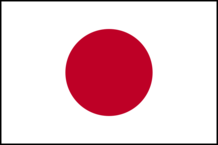About the project

Treasures Within
Mexican poet and former UNESCO Director-General Jaime Torres-Bodet said it best: rather than “vast cemeteries,” archives are places full of “the experiences, adventures, risks, and dramas” of society. They are crucial, he argued, to the “continuity of human conscience,” and to the possibility of good government; they contain the “instructive traces of life.”
UNESCO’s institutional archives and historical audiovisual collections contain evidence of over 70 years of ideas and actions for peace and international understanding that span the Organization’s wide-ranging fields of competence.
In 2015, UNESCO launched a fundraising project to digitize the Organization’s archives dating back to its predecessors, including the League of Nations’ International Institute for Intellectual Cooperation. The project is an important step in preserving key parts of our collective memory and in making these records more readily available to the public.
Two years later, thanks to the generous support of the Government of Japan, UNESCO launched a major two-year initiative. In partnership with the digitization company Picturae BV, an on-site laboratory was installed at the UNESCO Headquarters in Paris in February of 2018.
Click here to browse the collections currently being digitized.
Why Digitize?
The UNESCO institutional archives and historical audiovisual collections are a record of UNESCO’s mission to contribute to the building of peace, the eradication of poverty, sustainable development and intercultural dialogue through education, the sciences, culture, communication and information. The collections tell the story of the ideas and actions, the programs and projects, and the efforts undertaken to fulfil that mission.
The collections also document more than UNESCO itself. UNESCO’s records provide evidence of a history of international cooperation; of individual countries and newly independent states participating in and developing activities relating to education, communication, culture and sciences. With the ability to readily search and discover records within digital catalogues, users will be able to increase and extend the use of UNESCO’s invaluable documentary heritage.
Some of our oldest archives are the most frequently consulted materials in the Archives Reading Room at UNESCO Headquarters, Paris. So, it’s no wonder that after decades of physical handling, records have started to show some signs of wear and tear. Also, the multiplicity of analogue formats in our audiovisual collections, which include films, videos, audio recordings and photos dating as far back as the 1940s, have made use and consultation of these materials a major challenge for years, and in some cases impossible. Digital surrogates will contribute to the continuity of and access to the content, as well as to the preservation of the original materials by reducing the risk of damage incurred through handling, extending their longevity and historical value.


